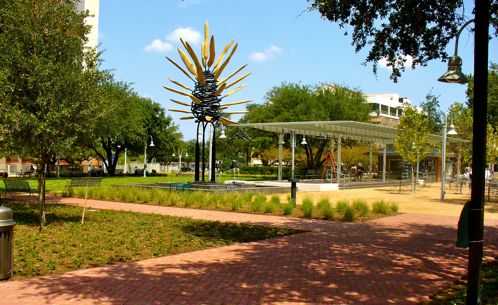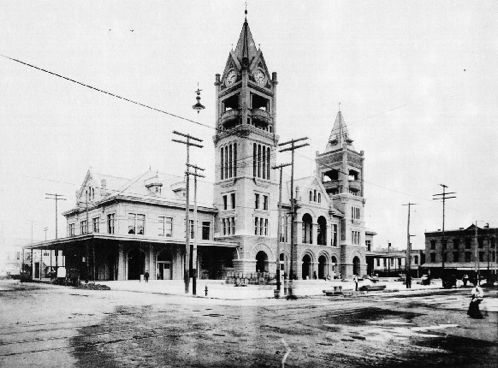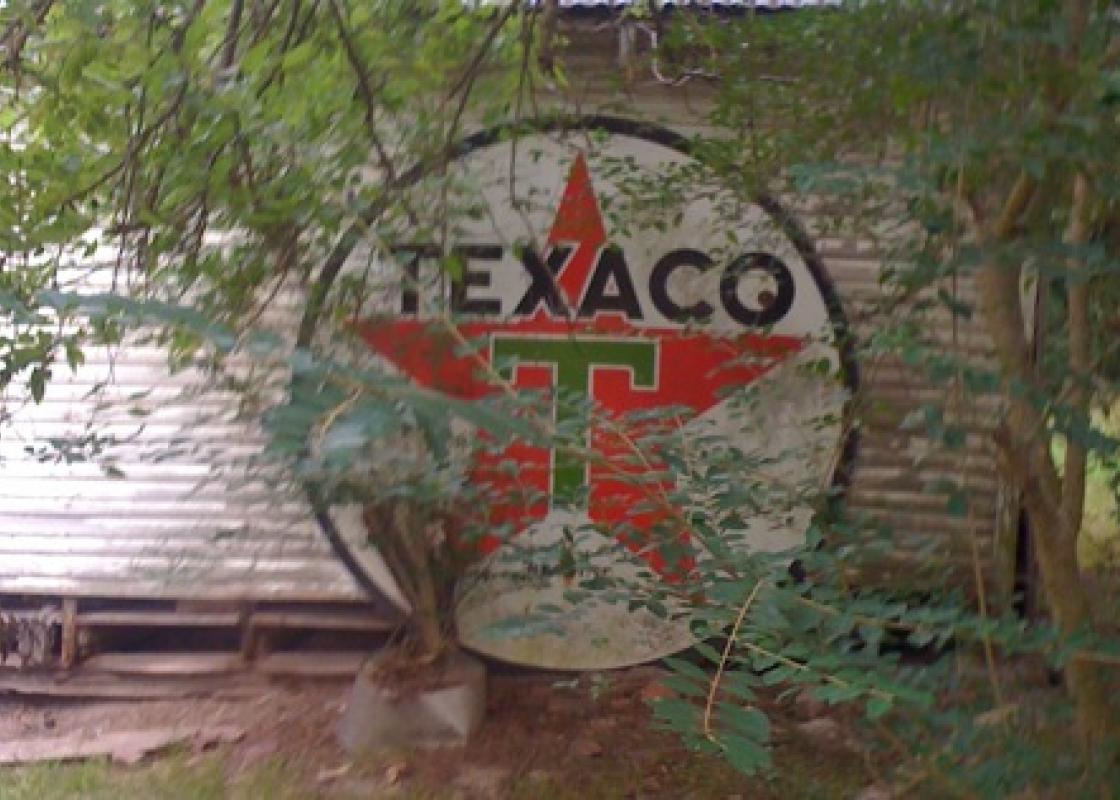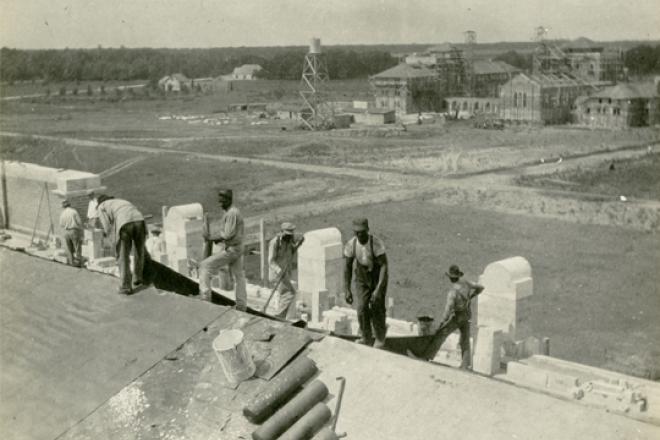
Houston Market Square Park, designed by Lauren Griffith Associates and Ray + Hollington Architects, featuring James Surls's "Points of View." Photo by Hank Hancock.
Visitors to the new Market Square Park in the past couple of weeks have seen significant changes, and many are distinctly hopeful about what it all means for Downtown. Designed by Lauren Griffith Associates with help from Ray + Hollington Architects, the new park retains all the artwork from Diverseworks’ 1992 redesign of the park, most notably James Surls’ monumental "Points of View," though this sculpture no longer enjoys its former position as the centerpiece of the park.
The new park is more a patchwork of rectilinear spaces, absent any single focus. Limited to one square block, it accommodates a great many ideas for what a park should be. As Mayor Annise Parker put it on the occasion of the park’s opening August 28, “It has a little bit of everything.” She enumerated attractions for kids, arts, pets, green space, and food. In addition to these, the park documents its own history in rich detail and also features Lauren’s Garden, a memorial to a Houston woman who perished in United Flight 93. Houston artist Ketria Bastian Scott contributed new works in cast bronze and provided considerable input into the layout of the memorial fountain and patio area.
The vision for the park seems to have been to cram as much as possible into it. These disparate functions divide the park into overlapping parcels, very reminiscent of Discovery Green. A shaded gravel café area leads to a kiosk and platform where Niko Niko’s will offer its popular Greek fare, leads to a lawn, leads to the much-hyped dog-runs (with water features), leads to the memorial, leads to a corner where a cluster of pillars gathers together past and current historical markers and granite plates describing the block’s history. Several paved walkways crisscross each of these features, though they seem more like suggestions than restrictions. Visitors can easily wander about at will, perhaps the greatest change from the park’s previous incarnation, which discouraged easy access from the sidewalks and nearly buried its central plaza out of sight. And not only were the oak and crepe myrtles on the site preserved, but additional Mexican sycamores have been planted, which will provide shade in the summer and allow plenty of light during the winter. It’s almost surprising to note how many trees stand in the park: the previous design had made them strangely invisible.

The fourth Houston City Hall, before it became a bus station.
The tragicomic historical narrative of the park raises a few questions about the significance of the recent reopening. In 150 years, the square block has been repurposed five times: once it was the original site for the capital of the Republic (never built), then it was a market place, and then it was combined with the city hall. The first city hall building was replaced after just 30 years. The next two were destroyed by fire. After the market and city hall relocated, the building was a bus depot, which ultimately---you guessed it---burned down in 1960. After that it was designated as a park, but remained a parking lot until 1976 when the Junior League of Houston installed the first of four park designs.
The first park featured a series of whimsical grassy hills that perhaps were visually striking from the bird’s eye perspective of an architectural model, but were in fact forbidding to visitors who feared what lurked out of sight. The hills were leveled a few years later, leaving the block a formless grassy desert. DiverseWorks installed its edition in 1992, convinced that art could change the world. Again, the design made some abstract aesthetic sense but performed poorly in the context of a public amenity. Its sunken plaza appealed to folks who just needed to sleep it off. As Mayor Parker put it, “We didn’t need another downtown urinal.”
The revamped Market Square Park has adopted new ideas about park design, including active programming and vending as attractions for park visitors, in the same way that has succeeded at Discovery Green. Nevertheless, the park is very small and is not envisioned as a destination in itself. The dog run and the weekly musical events that are planned will serve primarily the residents of downtown, who are concentrated in the historic district, and nearly all of whom, it seems, own a dog.
Skeptics will point at the eight or ten previous attempts to erect a permanent facility on this square block, and will ask what guarantees the success of this one in particular. They will point to the Jones Plaza redesign (2001), which was also supposed to feature permanent vendors, shaded seating, and active programming, but which stands largely empty most days. (It should be said, the plaza suffers from line-of-sight issues that are no longer relevant at Market Square.) What will qualify as success for Market Square, anyhow? Park-watchers are eagerly counting the curious visitors in recent days, but will the park maintain these numbers a year from now, or five years? The Downtown Houston Association is hopeful that the park will spark development in the empty lots that surround it, just as Discovery Green has done. A chicken-and-egg quandary arises though. Doesn’t the success of the park depend in large part on development to replace the awful parking lot on its southern border, or does the development depend on the proven success of the park?
Related Links:
Read the critical reception of the last remake of the park in "Market Square Park" by Joe McGrath in Cite 29, Fall 1992.
David Theis gives a detailed and colorful history of Market Square in "Back to the Future," Downtown magazine, Fall 2010.










